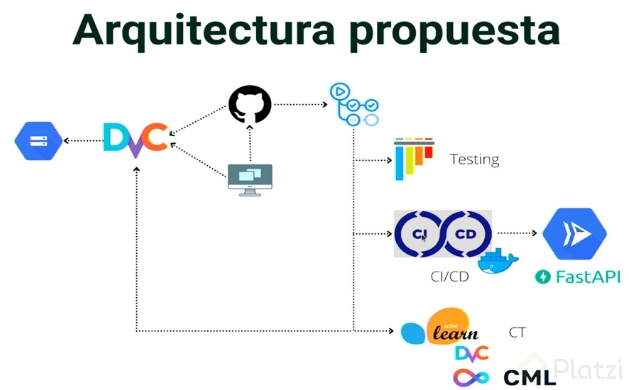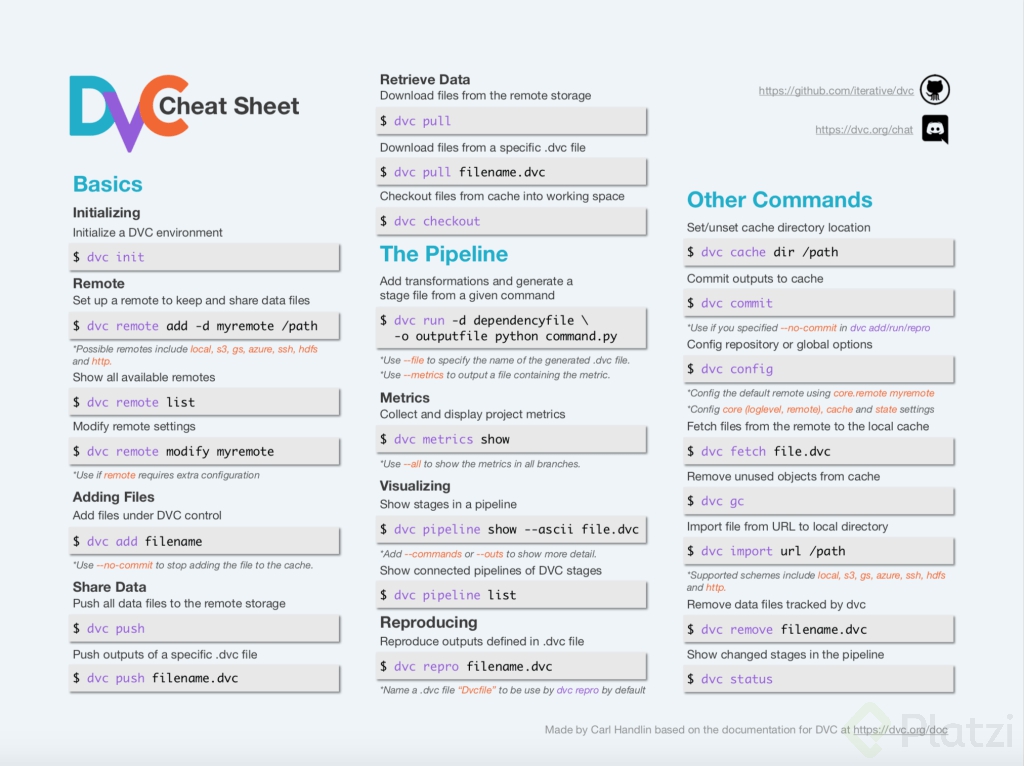conda create -n mlops python=3.9
conda activate mlops
pip install -r requirements.txt
conda install -n mlops_platzi ipykernel --update-deps --force-reinstall
dvc init
dvc add README.md
pip install dvc
dvc init
Install dvc_gdrive with pip
pip install dvc-gdrive
Then add the remote as:
dvc remote add myremote gdrive://1U0nayKU5gnZo5cNLxCKu5SUvcyHnCJhv
dvc add dataset/finantials.csv --to-remote -r myremote
dvc remote add mymodel gdrive://1U0nayKU5gnZo5cNLxCKu5SUvcyHnCJhv
dvc add model/model.pkl --to-remote -r mymodel
git checkout -b continuos_training_pipeline
Working on prepare.py
breakpoint()
Exit with q
Working on train.py
dvc run -n prepare -o dataset/full_data.csv python src/prepare.py
dvc run -n training -d dataset/full_data.csv python src/train.py
Working on Fastapi app
Install the dependencies
pip install -r api/requirements.txt
uvicorn api.main:app

